After eating or drinking. my son’s cheeks would turn bright red and he would get a runny nose. Before we knew that his red cheeks, runny nose, perpetual diaper rash and not sleeping were a sign of his allergies to wheat, dairy and soy, we thought he had a constant cold. I had a vague sense his cheeks were red all the time, but it was only when he got better and his perfect complexion came back, that I realized the red cheeks were a visable sign that his system was reacting to food he was eating. The most allergic foods are cow’s milk, wheat and soy. When parents realize their child can not tolerate milk, they often switch to soy formula. This is a big mistake for several reasons.
First, the dairy and the soy molecule are similar so many people who can’t tolerate milk can’t tolerate soy either.
Second soy is a legume and similar to the peanut molecule. People with peanut allergies can even have a severe reaction to soy. In addition, there is some suspicion that the increase of soy in our food supply may have contributed to the rising peanut allergies of children.
But, the third MOST IMPORTANT reason to not give soy milk is that it is an incredibly processed food which acts as a phytoestrogen and there is a lot of research which suggests it is unsafe for newborns and children. European countries have banned soy formulas. Weston Price has a great overview of the health implications of soy infant formula.
The most serious problem with soy formula is the presence of phytoestrogens or isoflavones. While many claims have been made about the health benefits of these estrogen-like compounds, animal studies indicate that they are powerful endocrine disrupters that alter growth patterns and cause sterility. Toxicologists estimate that an infant exclusively fed soy formula receives the estrogenic equivalent of at least five birth control pills per day. By contrast, almost no phytoestrogens have been detected in dairy-based infant formula or in human milk, even when the mother consumes soy products.
I tried soy milk, almond milk, hemp milk and oatmeal milk. What I discovered, was for an allergic child, rice milk is the safest thing for them to drink because if the consume anything else day after day, they are likely to become intolerant of it. Adults can add 1 Tablespoon of coconut milk for a creamier more milk like substitute. Here are four pictures of my son with his allergic red cheeks as well a picture of his perfect complexion after we stopped giving him the things he reacted to (Milk, Gluten, Soy, Oranges , Corn and BROCOLLI!)

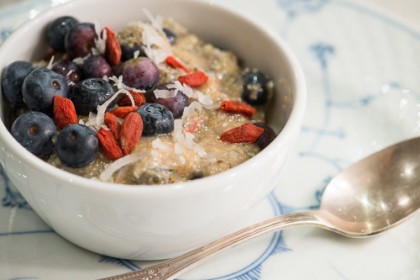
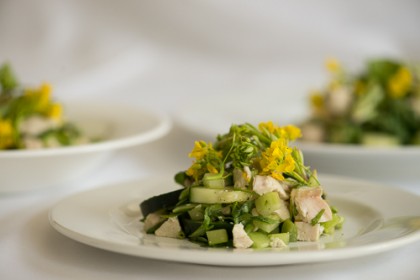
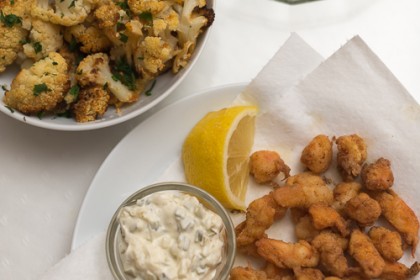
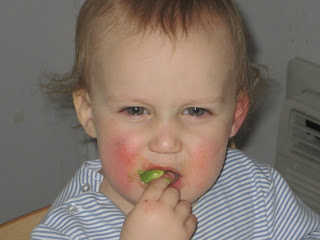

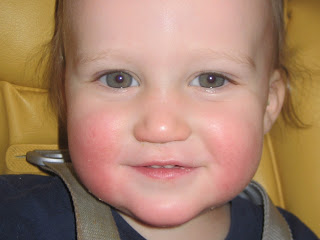

Natalie - My husband is very against soy. I will have to forward this on to him. I had no idea that European countries had banned them. My kids have never had a bottle, which is probably not normal for babies these days. That is a great juxtaposition of photos to illustrate your point too.
Anonymous - That is great that your kids have never had a bottle. They are so lucky.
Anonymous - Really interesting! Before modern medicine the mother was the “main care giver” and her kitchen was the place where many ailments were treated. Many children died and grieving was one of the main tasks of motherhood. Women had “extra” babies to compensate for the ones that died Modern medicine has made great strides in decreasing child mortality so that the average woman in the US now has about two children, and they usually survive to adulthood. Along with these fortunate developments the center of medical care has shifted from the home to the offices of doctors and to hospitals. But, ironically, some of the more subtle remaining childhood problems that are afflicting young children are probably handled rather poorly by doctors in their offices Alergies and health problems related to diet are so close to the refrigerator, the food shelf and the daily feeding of the child that it seems almost inevitible that the mother and the kitchen has to regain some of its former importance in the health care of the child. This probably has large social, economic and political implications.
Anonymous - My son had red cheeks all the time. Where can I buy rice milk so I can try him on that instead of similac?
gfcfmom - When young infants and children under 2 show signs of intolerance to milk, parents often have little guidance from pediatricians as to how to proceed. I had this problem with my second child, whose intolerance to milk was obvious to me, but less obvious to the three allergists and gastro intestinal doctor I visited to try to get guidance on how to wean my son who was incredibly sick while drinking milk. Here is what I would have done differently:
I would have placed him immediately on WESTSOY RICE MILK which is fortified with Vitamin D and calcium. Ask local health food store to order or order from internet. Then I would have used COCONUT OIL in all cooking because it has the saturated fat for brain development. In addition, I would have made sure he had enough protein each day. (I think it is 1/2 ounce for each pound. So if he was 25 pounds he needed 12/13 ounces protein. Or 4 ounces per meal–One egg is 6 ounces.)
Anonymous - I HAVE A TWO YEAR OLD AND A 5 MONTH OLD WHO ARE BOTH INTOLLERANT OF MILK. WE TRIED THE SOY AND LIKE YOU SAID IT WAS A BIG MISTAKE. TOOK HER LITTLE TUMMY FOR A RIDE. THE BABY TAKES ALIMENTUM AND MY OLDER CHILD DRINKS RICE MILK. I HAD LITTLE TO NO HELP FROM MY CHILDS DOCTOR TO HELP WITH THE INTOLLERENCE. JUST GOT ON LINE AND RESEARCHED IT MY SELF. GLAD I FOUND THIS SITE. CONFIRMS WHAT I HAD BEEN THINKING ALONG. THANKS!
Anonymous - Hi,
I have a grandson that has a severe peanut allergy. His mother recently put him on soy milk, after reading your article I called her and asked her to take him off of the soy milk immediately, and to try rice milk instead. Since he was startyed on the soy milk he has a runny nose, his eyes are red and swollen, and his sleep pattern continues to be poor. He is often very irritable. We live in North Jersey and are interested in finding a Pediatric allergist/immunologist that is open to alternative therapies as oppoesed to just prescribing zertec, which has not helped at all do you have any suggestions my email is ivanandanna@yahoo.com I eagerly await your response. Thanks
Emmy - Hello just came across your blog because I googled babies and red cheeks. I have a 4 month old who I breast fed up until recently. He has been on similac sensitive which he does not appear to have a reaction to. However after trying both rice cereal and oatmeal cereal his cheeks turn red and he gets fussy. I am going to stop trying the cereal but how do I know if this is something to be concerned with or not? He has been teething since 3 months but there is an obvious correlation between the cereal and the red cheeks. He also still does not sleep through the night. He slept twice through the night around Thanksgiving and then continued to be up once and now he is getting up several times again! I guess I am wondering what your child was like at 4 months? Am I being paranoid or could he have a gluten/allergy problem too?
Anonymous - I too am a mom to 4 children 2 of them have Celiac Disease. We have been GF for 2 years now but in the last couple of months my youngest DD has developed red cheeks as well. We have been trying to figure out what has been causing it as we have not veered from our known safe GF foods and it was never a symptom of hers before.
We tried rice milk before we found out about the CD and it did not go well but now that she has healed maybe it is worth a shot to try it again.
Anesha - Hi Nice Blog . In this, the body is studied by regions rather than by organs. This is of importance to the surgeon who exposes different planes after the skin incision and who, of course, must be perfectly familiar with structures as he explores the limbs and human endocrine systemcavities.
Anonymous - My son is allergic to milk. When switched from breastmilk to cow's milk he had a severe allergic reaction that led us to the emergency roopm.
One thing to note is that Cow's Milk is for BABY COWS not humans.
My son has been fine with soy milk, but I tend to limit his consumption.
Anonymous - I am really happy that I stumbled across this website. When I saw those pictures of your son's red cheeks it was like looking at my own 2 year old. Finally confirmation that I'm not a crazy Mama for taking my child off dairy and soy. I don't think we've gotten to the bottom of all his allergie sthough. The red cheeks came back again this week so now we're cutting wheat out too. Thank-you for your blog.
MK - Hi I was wondering what you thought about Goat milk for an alternative to cows milk for my 12 month old. Thank you tons for your informative blog!!!!
Anonymous - Reactions to chemical components of the diet are more common than true food allergies.[citation needed] They are caused by various organic chemicals occurring naturally in a wide variety of foods, both of animal and vegetable origin more often than to food additives, preservatives, colourings and flavourings, such as sulfites or dyes.[13] Both natural and artificial ingredients may cause adverse reactions in sensitive people if consumed in sufficient amount, the degree of sensitivity varying between individuals.
Chemical intolerance can occur in individuals from both allergic and non-allergic family backgrounds. Symptoms may begin at any age, and may develop quickly or slowly. Triggers may range from a viral infection or illness to environmental chemical exposure. It occurs more commonly in women and may be because of hormone differences, as many food chemicals mimic hormones.
A deficiency in digestive enzymes can also cause some types of food intolerances. Dietary carbohydrate intolerances include, Lactose intolerance is a result of the body not producing sufficient lactase to digest the lactose in milk[25][26]; dairy foods which are lower in lactose, such as cheese, are less likely to trigger a reaction in this case. Coeliac disease (gluten intolerance) results in damage to villi in the small intestine, which makes it difficult for the body to absorb water and nutrients from foods [27][28],and fructose intolerance [29].
The most widely distributed naturally occurring food chemical capable of provoking reactions is salicylate[18], although tartrazine and benzoic acid are well recognised in susceptible individuals.[30][31][32]. Benzoates and salicylates occur naturally in many different foods, including fruits, juices, vegetables, spices, herbs, nuts, tea, wines, and coffee. Salicylate sensitivity causes reactions to not only aspirin and NSAID's but also foods in which salicylates naturally occur, such as cherries.
Other natural chemicals which commonly cause reactions and cross reactivity include amines, nitrates, sulphites and some anti-oxidants. Chemicals involved in aroma and flavour are often suspect[20][33][34][35].
The classification or avoidance of foods based on botanical families bears no relationship to their chemical content and is not relevant in the management of food intolerance.
Salicylate-containing foods include apples, citrus fruits, strawberries, tomatoes, and wine, while reactions to chocolate, cheese, bananas, avocado, tomato or wine point to amines as the likely food chemical. Thus exclusion of single foods does not necessarily identify the chemical responsible as several chemicals can be present in a food, the patient may be sensitive to multiple food chemicals and reaction more likely to occur when foods containing the triggering substance are eaten in a combined quantity that exceeds the patient's sensitivity thresholds. People with food sensitivities have different sensitivity thresholds, and so more sensitive people will react to much smaller amounts of the substance.[4][9][20][34][35][36][37][38][39] [40]
Eowyn's Heir - to Emmy–
I know your baby's a lot older now, but my first thought on reading your comment was that at 4 months, very few babies are ready for any solid foods, much less grains (which are a terrible weaning food… babies don't have salivary amylase, to break down starches, until they're closer to 2!). If I was in your shoes I'd go back to exclusive breast milk or formula if you have to wean for some reason. Then I'd introduce lightly-cooked egg yolk, avocado and plain yogurt, all of which have the high fat & protein like mother's milk does. Check out the weston a price info on feeding children. Passionatehomemaking.org has some great articles on it, too!
vedjen - Our son has exactly these red cheeks!
We are currently avoiding all foods that came up as "moderate" or "avoid" on an ELISA blood test but after two weeks his cheeks still flare up about every other day. The duration of the flare ups may be shorter but every time they flare I question if we are missing something or if the test was wrong.
Once you identified and eliminated the foods your son was reacting to did he still have flare ups? Or once you removed the offending foods the flare ups stopped immediately?
Anonymous - This was a helpful post but I wish I had seen this sooner as my child died last month.